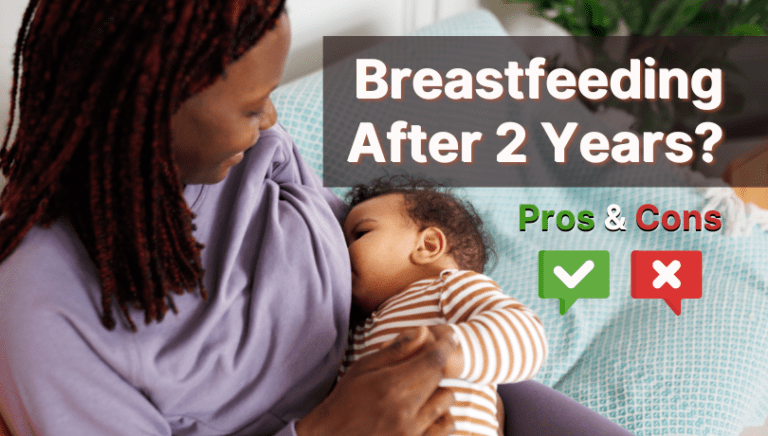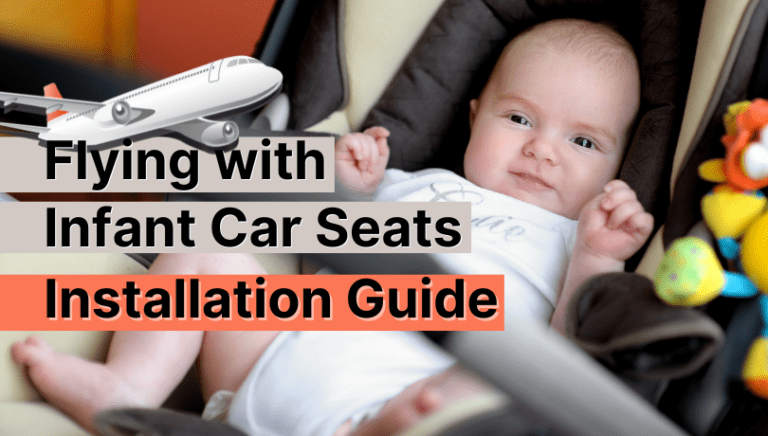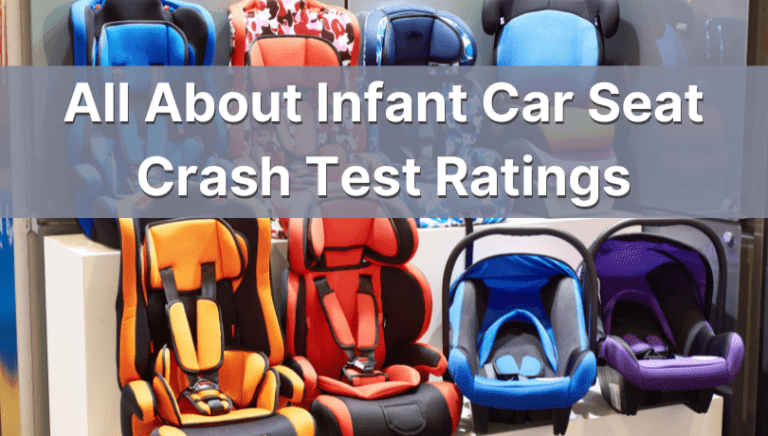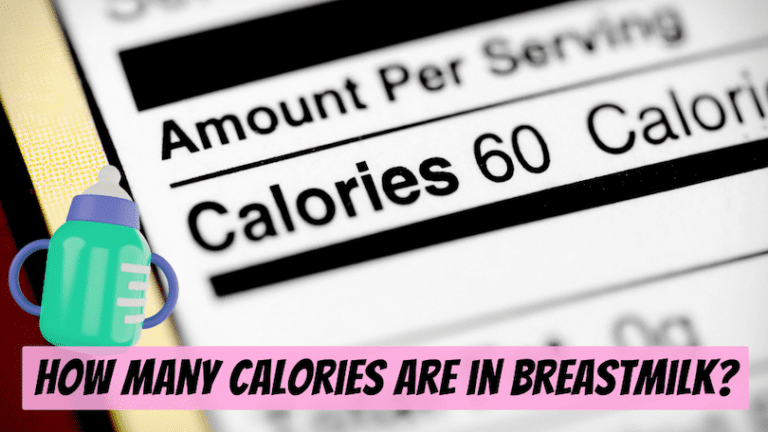Know When to Switch to Booster Seats: Complete Guide
Every step “up” in a car seat is a step down in safety.
Our kids’ milestones are as much of an achievement for us as for them. Yet, it’s a bittersweet feeling. Watching them grow is beautiful, but knowing they don’t need us as much as they grow tugs at our hearts. The transition from their infant seat to booster seats is quite similar.
So, if you’re a new mom and wondering when to switch to booster seats, here’s a word of advice – don’t rush!
Parents must consider several factors to decide the right time for this transition. And I can help you decide. I have done my fair share of research, and have quite a bit of experience (6 kids!) to answer all your queries.
Let’s start!

Table of Contents
Difference Between Infant and Booster Car Seats
1. Infant Car Seat

An infant car seat is a child safety restraint system that has a bucket-style seat for newborns and younger infants.
- These seats are rear-facing and have a 5-point harness to protect your baby.
- You’ll also find seats offering multiple reclining options to support their head and neck, reducing suffocation hazards.
2. Booster Seats

Booster seats are entirely different from an infant seat.
- A booster seat allows your child to use the car’s seatbelt for restraint.
- Primarily, the booster seat provides side impact protection, and restraints a child safely by positioning the seatbelt correctly.
When to Switch to Booster Seats: 3 Things to Know
Every kid is different. And they grow differently. Sometimes, 8-year-olds may be too small for the switch, but 6-year-olds can handle them!
So, knowing when to switch depends on your state’s regulations and the basic requirements that your child needs. Here’s what you need to know:
1. Regulations
Regulations recommend using infant car seats for as long as it is allowed before you think of switching to booster seats.
- The AAP and NHTSA recommend keeping kids in rear-facing 5-point harness infant car seats as long as possible.
- The CDC advises waiting until they’re at least 5 years old or until they hit the maximum weight and height limit to make the switch.
- Experts agree that kids should stay in infant car seats until they reach the manufacturer’s limits.
2. Basic Requirements
Watch out for these basic requirements before you move your kids to booster seats:
- They’re at least 4 years old.
- They must weigh 40 lbs or above.
- Their height must be between 38 and 40 inches, though it may vary depending on state laws and manufacturer guidelines.

Besides the obvious signs, maturity is key for transitioning to a booster seat. Since most boosters lack the protection of a 5-point harness, kids need to understand not to slouch, lean over, or unbuckle the seat belt once they’re strapped in.
3. Best Practices
I know I’m repeating what I’ve said above, but this is crucial dear parents: even though booster seats are for kids who’ve outgrown their car seats, it’s best to wait as long as possible before you switch them (and don’t forget to store your infant car seats properly even after you’ve made the switch).
For example, our eldest son, Aiden, reached the height limit before meeting the other booster seat requirements. But, I knew that it wasn’t time for a switch yet.
- If your child outgrows the harness height before the other criteria, do what we did: look for a car seat with a higher shoulder strap instead of moving to a booster seat right away.
- If your child is uncomfortable in a car seat, try a booster seat with a 5-point harness. It makes getting in and out easier and adapts as they grow. It also helps to know exactly where the shoulder straps should be placed for comfort and safety.
Since it’s not illegal, some manufacturers release booster kids for kids who haven’t yet reached 40 lbs. Some seats have a minimum weight limit of 33 to 35 lbs and come without a harness.
So, please consider what’s best for your child, understand the state law, and always go with best practices, not just the bare minimum!
Recommended Reading: Infant Car Seat Crash Test Ratings
My Child is 40 lbs. Do I Move Them To a Booster Seat?
No. Reaching the 40-lb weight requirement doesn’t mean your kid must move to a booster seat.
- Your kids are restrained in their car seats with the 5-point harness. Thus, they can’t move around, slouch, or slide out. But once they level up to a booster seat, they’re only protected by the vehicle’s seat belt.
- And toddlers are a handful. There’s going to be mischief in the car if you switch them too early and things can escalate too! Even reaching down to pick up a toy or sliding out to play with their siblings can be dangerous!

But, if you’re thinking about transitioning them to a booster seat, start with a conversation. Understand if they already do or want to do any of the following:
- Do they lean over to play/fight with their sibling?
- Do they wiggle or slide out of their car seat?
- Do they play with or unbuckle their seat belt to get out of the seat in a moving car?
- Do they slouch or slump forward in the seat?
- Do they want to hang out the window?
All these are dangerous things to do in a moving vehicle, so if this is their mindset, your little one isn’t ready for a booster seat right now. Even if they’re at the height and weight limit, please find a car seat that can handle their size and keep them safe.
Pro Tips To Use The Booster Seat
- Place the booster in the back seat and check if it fits. The center of the back seat is best, but the right or left works too – just make sure you can see your kid from the driver’s seat.
- Some booster seats have clips or safety guides to help you position the seatbelt correctly – if your booster has it, use it.
- Boosters are held in place with your toddler’s weight and the lap and shoulder belts that you’ll have to position correctly. So, do a safety check with your child in the seat!
- When not in use, stow away the booster. You can strap it down or pack it away in the back. An unbuckled booster can be a distraction and a safety hazard, especially with young children in other car seats.
When to Stop Using A Booster Seat
You can retire the booster seat if your child has reached these conditions:
- Their feet touch the car’s floor.
- You find that they sit with their back against the seat comfortably and their knees can bend over the edge without them leaning forward or slouching.
- The booster seat’s lap belt sits over their upper thighs rather than their belly.
- The booster seat belt goes across their chest and shoulders rather than their neck and throat.
If your child is at this stage, then congratulations, dear mom! Your little one is finally ready for the next big step – the adult seat belt.
Wrapping Up: Booster Seats 101
Every transition is a milestone and a sign that our little ones aren’t so little anymore.
And the switch from a car seat to a booster is big. That’s why I always say, never rush to graduate.
Enjoy the car seat as long as possible. Wait until your child meets all the booster seat criteria and even then, think twice. Maturity levels vary, and transitioning too soon can be risky.
Know the difference between best practice and the law. If your child hasn’t reached all the milestones yet, it just means they’ll be safer on the road a bit longer.
Remember: Safety first!






